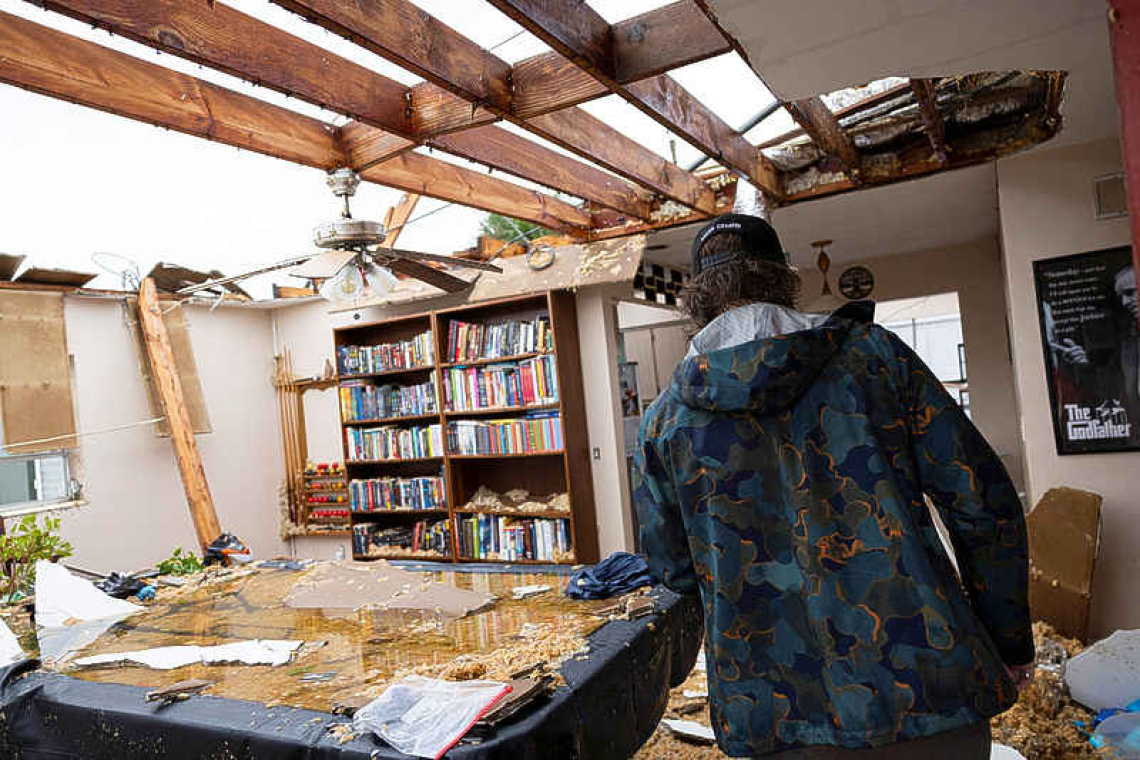ST. PETERSBURG, Florida--Hurricane Milton made landfall on Florida's west coast on Wednesday, striking a little sooner and further south than forecast, offering the state a glimmer of hope it might be spared the worst of the anticipated catastrophe.
The storm made landfall around 8:30 p.m. EDT as a Category 3 hurricane with maximum sustained winds of 120 miles per hour (195 kph) near Siesta Key, the U.S. National Hurricane Center said.Siesta Key is a barrier island town of some 5,400 off Sarasota about 60 miles (100 km) south of the Tampa Bay metropolitan area, which is home to more than 3 million people.
With the storm coming ashore before high tide, Governor Ron DeSantis said he hoped the west coast of Florida could avoid the worst of the predicted storm surge. Forecasters said seawater could rise as high as 13 feet (4 meters).
DeSantis also expressed hope that Tampa Bay, once seen as the potential bull's eye, could avoid major damage and allow shipping to resume promptly after the storm passes.Even so, Milton had already spawned at least 19 tornadoes, causing damage in numerous counties, and destroyed around 125 homes, most of them mobile homes, DeSantis said.
The Hurricane Center labeled it an "extremely dangerous" storm capable of deadly storm surge, ferocious winds and flash flooding across Central Florida.No fatalities had yet been reported, but people were warned venturing outside could be deadly.
"At this point, it's too dangerous to evacuate safely, so you have to shelter in place and just hunker down," DeSantis said upon announcing the landfall.
The storm was expected to cross the Florida peninsula overnight and emerge into the Atlantic, still with hurricane force, on Thursday.Once past Florida, it should weaken over the western Atlantic, possibly dropping below hurricane strength on Thursday night, but will nonetheless pose storm-surge danger on the state's Atlantic coast as well.
Tropical storm force winds were engulfing most of the state. At sea, the hurricane created waves close to 28 feet (8.5 meters) high, the National Oceanic and Atmospheric Administration said.
In a state already battered by Hurricane Helene two weeks ago, as many as two million people were ordered to evacuate, and millions more live in the projected path of the storm.Much of the southern U.S. experienced the deadly force of Hurricane Helene as it cut a swath of devastation through Florida and several other states. Both storms are expected to cause billions of dollars in damage.
Zoo Animals
While human evacuees jammed the highways and created gasoline shortages, animals including African elephants, Caribbean flamingos and pygmy hippos were riding out the storm at Tampa's zoo.
Nearly a quarter of Florida's gasoline stations were out of fuel on Wednesday afternoon. In Orlando, many people said they had ridden out previous hurricanes, but Milton's rapid intensification and warnings from officials spurred them into taking unusual precautions for the inland city.
Jim Naginey, a 61-year-old homeless man who has lived in Orlando for nearly three decades, said he had survived previous hurricanes on the streets. But he decided to seek shelter during Milton, joining scores of others in Colonial High School, where families huddled on the gym floor, munching on bananas and sandwiches and sipping water provided by Orange County.
"This one seems different," Naginey said. "After seeing what happened last week in North Carolina, it seems that unexpected disaster can hit in places not used to it. That's why I decided to seek shelter here."
The Federal Emergency Management Agency had moved millions of liters (gallons) of water, millions of meals and other supplies and personnel into the area. None of the additional aid will detract from recovery efforts for Hurricane Helene, the agency's administrator, Deanne Criswell, said earlier Wednesday.
Trucks have been running 24 hours a day to clear mounds of debris left behind by Helene before Milton potentially turns them into dangerous projectiles, DeSantis said.
About 9,000 National Guard personnel were deployed in Florida, ready to assist recovery efforts, as were 50,000 electricity grid workers in anticipating of widespread power outages, DeSantis said.Search-and-rescue teams were prepared to spring into action as soon as the storm passes, working through the night if needed, DeSantis said.
"It's going to mean pretty much all the rescues are going to be done in the dark, in the middle of the night, but that's fine. They're going to do that," DeSantis said.
Major Florida theme parks shuttered ahead of the storm, with Disney World, Universal Studios and SeaWorld all closing their doors later on Wednesday.
Nineteen hospitals were evacuated, the Florida Hospital Association said. Mobile homes, nursing homes and assisted-living facilities faced mandatory evacuation.
Milton became the third-fastest intensifying storm on record in the Atlantic, growing from a Category 1 to a Category 5 in less than 24 hours.







